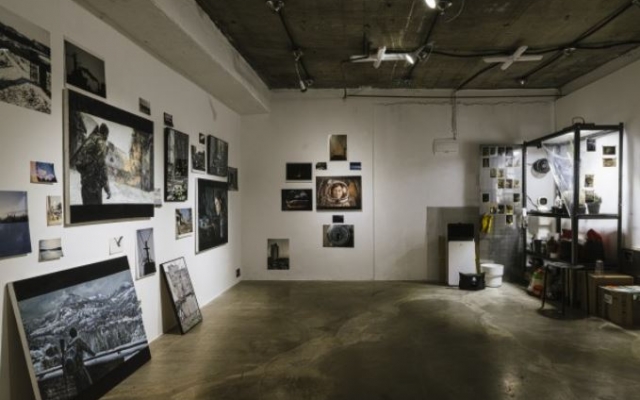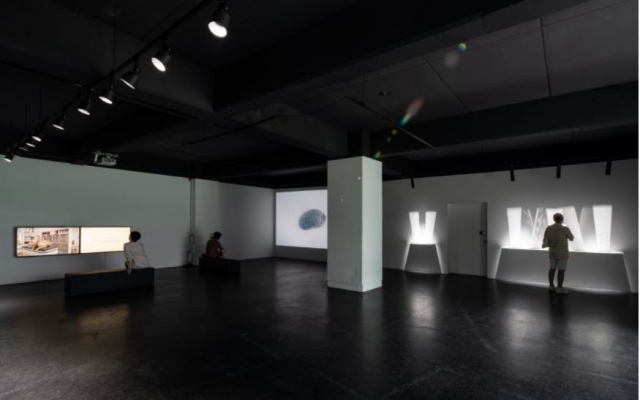The importance of embracing diversity in the art world is not just limited to artists. There are also other members who seek to experiment with their practices expanding the art world. Independent curators not only preserve the legacy of art but also add new perspectives to the curatorial discourse that have not been dealt with in the institutional art world, building new connections to a larger conversation.
There are a number of project spaces in Korea that support the artistic practices of both artists and curators. Of these many spaces, the following three platforms are the ones that were founded in the late 2010s by independent curators.
 Exhibition view of "Chun Kook-kwang, a Modernist" at WESS, Seoul. March, 12 - April 8, 2022. Photo by Aproject Company.
Exhibition view of "Chun Kook-kwang, a Modernist" at WESS, Seoul. March, 12 - April 8, 2022. Photo by Aproject Company.WESS (We Show Separate)
WESS, co-founded by JangHyejung and Song Goeun, opened its doors in October 2019 as a curatorial platform that stages various exhibition projects and programs by eleven Seoul-based curators who are active in the Korean contemporary art scene. With the need for a space to discuss the sustainability of curatorial activities and a physical site to realize each of the participating curators’ specific interests, the platform is operated as a joint working space where the curators present their own curated exhibitions in turn.
WESS was also organized to address the need for a space to solve the difficulties surrounding curatorial practices and to reflect contemporariness in the form of exhibitions. Instead of setting a strong theme in running the whole program, WESS aims to shed light on what each of the member’s focuses on in today’s society. This is to reflect what is occurring during our time, to be able to fill in the gaps existing in the Korean contemporary art scene
 Partial exhibition view of "COINCIDE" at out_sight, Seoul. March 31 — May 20, 2022. © out_sight
Partial exhibition view of "COINCIDE" at out_sight, Seoul. March 31 — May 20, 2022. © out_sightout_sight
out_sight was co-founded by artist Kim Sangjin and curator Lim Jinho, opening in October 2016 in Hyehwa, Seoul. Just as its name suggests, the exhibitions at out_sight attempt to present works that are outside of the traditional art market system and bureaucratic structure, identifying the boundaries and relationships between the inside and outside of the art world.
out_sight puts weight on the texts that accompany the exhibitions. It is one of the methods that can transform subjective experiences into a sharable form; it is an important tool for understanding the connection between exhibited artworks, as well as for building a narrative and contextualizing the exhibition.
out_sight also aims to connect contemporary art and the members of the art world, along with discourses and phenomena happening around the field with the local art scene, to find an alternative perspective in realizing contemporaneousness.
 Exhibition view of "Tangible Error" at d/p, Seoul. August 25-September 26, 2022. Photo by Lee Yerin(15Studio).
Exhibition view of "Tangible Error" at d/p, Seoul. August 25-September 26, 2022. Photo by Lee Yerin(15Studio).ⓒ Seoul Urban Regeneration Center.
d/p
d/p was founded in 2018 by two curators, Kim Jiyong and Lee Minji, on the fourth floor of Nakwon Plaza, Seoul. d/p is an abbreviation of “discrete paradise.” Like the stars in the universe, each individual is a separate paradise scattered in the world. Individuals can also form a constellation when gathered together.
d/p selects three to four teams of independent curators every year, giving them the opportunity to open shows at d/p. Another leading program of d/p is the “Streaming Exhibition” program, which began with the question: Why do exhibitions have to occupy space and time in the digital age? The program provides the space to any team who would like to present a show and offers live video streaming throughout the exhibition for visitors.























